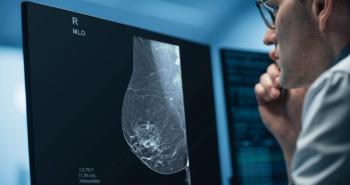
Tomosynthesis helps CAD catch lung nodules
Digital tomosynthesis shows promise for improved lung nodule detection compared with chest radiography. It may also improve performance of CAD algorithms for lung nodule detection by eliminating structure overlap that causes many false positives, according to a study presented at the 2005 RSNA meeting.
Digital tomosynthesis shows promise for improved lung nodule detection compared with chest radiography. It may also improve performance of CAD algorithms for lung nodule detection by eliminating structure overlap that causes many false positives, according to a study presented at the 2005 RSNA meeting.
Led by Nariman Majdi Nasab, Ph.D., investigators at Duke University tested automated detection of lung nodules on digital tomosynthesis images using a textural and morphological CAD approach. They developed and tested an algorithm (CAD-T) on five subjects using a commercial CsI/a-Si flat-panel detector and a custom tube mover. Patient exposure was equivalent to a lateral screen-film radiograph.
There were 12 nodules in the five subjects. The CAD-T method detected 11 of 12, which ranged from 4 mm to 21 mm. CAD-T marked an average of seven false positives per subject, mainly due to end-on vessels seen in cross section.
Sensitivity and specificity of the CAD-T method proved comparable to other CAD techniques applied to projection chest radiographs, according to the researchers.
Newsletter
Stay at the forefront of radiology with the Diagnostic Imaging newsletter, delivering the latest news, clinical insights, and imaging advancements for today’s radiologists.




























